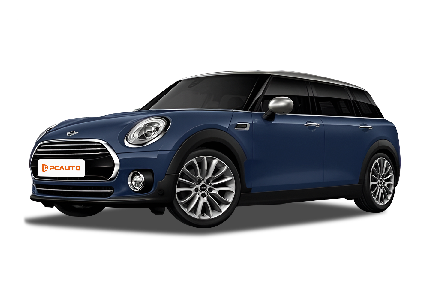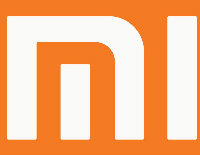

Reference Only. Update Soon
2019 MINI JCW Clubman
No.2 in Best WagonPrice
RM 358,888
Summary
Core Specs
Price
Highlights
Other Variants
Dealers
Related Q&A
Summary
Drivers love the 2019 MINI JCW Clubman, a C-Segment Wagon launched in 2019. At RM 358,888, it’s great value. Carry 5 people easily – the roomy interior measures 4253mm long, 1800mm wide, and 1441mm tall. Ideal if you haul kids or gear but want easy city handling.
It cruises smoothly at up to 250km/h. With its 1998cc engine, you get lively acceleration without high fuel costs. For a versatile ride that’s stylish and dependable, the 2019 MINI JCW Clubman ticks every box.
It cruises smoothly at up to 250km/h. With its 1998cc engine, you get lively acceleration without high fuel costs. For a versatile ride that’s stylish and dependable, the 2019 MINI JCW Clubman ticks every box.
Core Specs
Segment
C-Segment
Engine Capacity(cc)
1998
Transmission
AT
Fuel Comsumption (L/100km)
5.7
Fuel Tank(litres)
48
Top Speed(km/h)
250
Seats
5
Length(mm)
4253
Width(mm)
1800
Height(mm)
1441
Wheelbase(mm)
2670
Boot Volume(L)
360
Other Variants
Price
RM 358,888
Body
4253×1800×1441
Engine Power(PS)
309
Engine Torque(Nm)
-
TRANSMISSION
AT
Fuel Consumption
5.7
Related Q&A
View More >Q
What is the BMW I7 Specs? Here's the Full Specifications
The specifications of the 2023 BMW i7 XDrive60 are as follows: The price is RM 707,250, and it belongs to the luxury pure - electric vehicle category. The vehicle is 5391mm long, 1950mm wide, and 1544mm high, with a wheelbase of 3215mm. It weighs 2715kg, features a 4 - door, 5 - seat design, and has a trunk capacity of 500L.
In terms of power, it is equipped with two high - performance electric motors. The maximum horsepower of the motors is 544PS, with a total power of 400kW and a total torque of 795N·m. The official 0 - 100km/h acceleration time is 4.7 seconds, and the top speed is 210km/h. The official pure - electric driving range is 615km. The battery capacity is 102kWh, with a power consumption of 19.7kWh/100km. Fast charging takes 11 hours.
It uses all - wheel drive, with a double - wishbone independent suspension at the front and a multi - link independent suspension at the rear. Both the front and rear are equipped with disc brakes and electronic parking brakes. The tire specifications are P255/45HR20 at the front and P285/40HR20 at the rear.
The safety configuration is rich, including 7 airbags and multiple active safety systems. The in - car configuration is also very luxurious, with a 14.9 - inch central control screen, 18 Bowers & Wilkins speakers, etc.
 WildernessJul 23, 2025
WildernessJul 23, 2025Q
Does the Jeep Compass have 4WD?
The Jeep Compass is a 4x4 vehicle equipped with an All-Wheel Drive (AWD) system. This drivetrain distributes engine power to all four wheels, delivering superior traction, stability, and off-road capability. Compared to two-wheel drive configurations, the AWD system offers distinct advantages across various road conditions.
On slippery surfaces like wet pavement or snow-covered roads, it enhances tire grip by optimizing power distribution, significantly reducing slip risks. For light off-road scenarios such as mud or sand, the four-wheel torque allocation enables more easy terrain navigation. The Compass's AWD system improves its overall performance, ensuring reliable handling whether during daily commutes or when encountering challenging conditions - providing drivers with an enjoyable driving experience.
 BikerRideFreedomMay 22, 2025
BikerRideFreedomMay 22, 2025Q
What Are the Difference Variants of Honda Civic Type R?
As a representative of high-performance front-wheel-drive hot hatches, the Honda Civic Type R has attracted much attention from car enthusiasts in the Malaysian market, and each generation of its models has its unique features.
The first-generation EK9 Type R (1997 - 2000) was equipped with a B16B 1.6L naturally aspirated engine with a red-line speed of 8400 rpm, which is a paradigm of Honda's high-revving naturally aspirated spirit. The second-generation EP3 (2001-2005) switched to a K20A 2.0L engine. It adopted a European design for the first time and retained the six-speed manual transmission. The third - generation FD2 (2007-2010) returned to a four-door design, and the power of the K20A engine was increased to 225 horsepower. The fourth - generation FK2 (2015-2017) was equipped with a 2.0L VTEC turbocharged engine for the first time, outputting 310 horsepower. The fifth - generation FK8 (2017-2021) increased the horsepower to 320 through aerodynamic optimization, breaking the records of front - wheel - drive cars on many race tracks. The latest FL5 (2022 to present) uses a more radical design language, with the horsepower increased to 330 and a standard LSD limited - slip differential.
It's worth noting that in the Malaysian market, Type R models are mainly introduced through parallel imports. Car enthusiasts need to pay special attention to the compatibility of the right-hand-drive versions and the local certification requirements. Meanwhile, although the Civic RS model launched by Honda in Southeast Asia is equipped with a 1.5T engine, its positioning is more inclined to daily driving and is fundamentally different from the race - track genes of the Type R.
 ChromeCrusherJul 21, 2025
ChromeCrusherJul 21, 2025Q
When is the Release Date of Xpeng G6?
The XPENG G6 was officially launched in the Chinese market on June 29, 2023. As a mid-sized pure-electric SUV, it is equipped with an 800V high-voltage fast-charging platform and the XNGP intelligent assisted driving system. The maximum range can reach up to 755 kilometers (under CLTC standards), demonstrating XPENG Motors' technical strength in the fields of electrification and intelligence.
Regarding the Malaysian market, the specific release date of the XPENG G6 has not been officially announced. However, referring to the plans for other Southeast Asian countries, it is expected to be introduced within 2024. The exact date awaits an official notice from the official Malaysian distributor or XPENG Motors' Asia-Pacific region.
Malaysian consumers interested in pure-electric SUVs can follow XPENG Motors' local social media or official website for updates. Meanwhile, they can also keep an eye on the Malaysian government's policies regarding electric vehicle import tariffs and charging infrastructure construction. These factors usually affect the launch schedule of international electric vehicle brands in the local market.
Currently, the electric vehicle market in Malaysia is gradually heating up. Besides XPENG, brands like BYD and Tesla have also been making inroads. In the future, consumers will have more choices of high-performance, long-range electric vehicles.
 GrinningSmileHappinessJul 22, 2025
GrinningSmileHappinessJul 22, 2025Q
Is Ativa a safe car?
As a popular small SUV in the Malaysian market, the Perodua Ativa's safety performance meets the mainstream level of models in its price range. It comes standard with basic features such as dual airbags, ABS + EBD, Electronic Stability Control (ESC), and Hill Start Assist. The high - end version also adds side airbags and advanced active safety systems like Autonomous Emergency Braking (AEB) and Lane Departure Warning. Overall, its safety equipment is better than entry - level models in the same class but not as good as more premium products.
According to the ASEAN NCAP test, the Ativa received a five - star rating, with an 83% score in the adult occupant protection category. This shows that its body structure can effectively protect passengers in a collision. However, it should be noted that these tests are conducted under standard conditions, and the results in real - world road accidents may vary depending on the collision angle and speed.
For Malaysian consumers, the safety performance of the Ativa meets the needs of daily urban commuting. However, if you frequently drive long - distance on highways, it is recommended to choose a version with a more comprehensive active safety system.
It's important to note that the safety performance of any vehicle highly depends on proper use, including wearing seat belts, obeying speed limits, and regular maintenance. Good driving habits, along with maintaining an appropriate following distance and having a defensive driving mindset, can often prevent accidents more effectively than vehicle configurations.
 ActorStageAug 4, 2025
ActorStageAug 4, 2025Q
What is the Perodua Aruz Price? How Much Does It Cost?
The Perodua Aruz comes in multiple different versions, and the prices vary among models. The price of the 2023 Perodua Aruz 1.5L X is RM 62,500; the 2023 Perodua Aruz 1.5L H is sold at RM 68,000; and the price of the 2023 Perodua Aruz 1.5L AV is RM 75,500. Previously, for older models, the 2021 Perodua Aruz 1.5 X was priced at RM 72,900, the 2021 Perodua Aruz 1.5 AV at RM 77,900, the 2019 Perodua Aruz 1.5 X at RM 72,900, and the 2019 Perodua Aruz 1.5 AV at RM 73,226. This price information can serve as a reference for consumers when making a purchase. Meanwhile, due to market factors, policies and other influences at different times, the actual purchase price may fluctuate. It is recommended to consult local dealers when buying a car to get the most accurate price.
 AdventureJul 10, 2025
AdventureJul 10, 2025Q
What is the Length of BYD Sealion 7?
The BYD Sealion 7 has a body length of 4,830 millimeters. As a mid - sized pure - electric SUV, its dimensions are well - suited for city driving and family use in the Malaysian market. It not only ensures a spacious interior but also maintains a flexible handling experience.
This vehicle adopts BYD's latest e - Platform 3.0 technology, featuring an efficient electric drive system and excellent range performance. Meanwhile, its design style combines modern technological sense with practicality. For example, the streamlined body reduces wind resistance and improves energy efficiency.
For Malaysian consumers, the size and performance of the Sealion 7 are highly adaptable to the local diverse driving environments, whether it's daily commuting in the city or long - distance trips on weekends. In addition, its intelligent configurations and comfort - oriented designs also meet the needs of Malaysian users for high - quality electric vehicles. For instance, it is equipped with an advanced driving assistance system and a spacious rear seat area, making it an ideal choice for family users.
If you're considering an electric SUV that combines practicality and technological sense, the BYD Sealion 7 is definitely a model worth paying attention to.
 WittyRemarkJul 23, 2025
WittyRemarkJul 23, 2025Q
What is the difference between Ford Ranger and Ford Raptor?
There are some obvious differences between the Ford Ranger and the Ford Raptor. Firstly, in terms of appearance, with rugged body lines, a unique grille, and large wheel hubs, the Raptor is more aggressive and sporty. Secondly, in terms of power, the Raptor usually shows a more robust engine performance, with higher output power. Thirdly, in terms of the suspension system, the Raptor has been specially tuned to adapt to more extreme off-road conditions. Fourthly, as for the interior configuration, the Raptor tends to be more luxurious and advanced, using high-quality materials and equipped with more technology and comfort features. However, specific differences can vary depending on the model year and configuration. Generally speaking, the Raptor is a high-performance, off-road enhanced version of the Ranger.
 SwimmerStrokeMar 31, 2025
SwimmerStrokeMar 31, 2025Q
Is the Bugatti Veyron a luxury car?
The Bugatti Veyron is truly a luxury car. It is not only renowned for its outstanding performance but also has become an iconic product in the automotive world due to its exquisite craftsmanship and luxurious design. As a supercar, the Veyron is equipped with an 8.0 - liter quad - turbocharged W16 engine and can reach a top speed of 407 kilometers per hour. This kind of performance has earned it a special place in the hearts of car enthusiasts in Malaysia and around the world. Although its price is extremely high, it also reflects its rarity and top - notch manufacturing standards. In Malaysia, due to taxes and import restrictions, the Veyron is even rarer. Therefore, owning it is not only a symbol of wealth but also a pursuit of the ultimate in automotive craftsmanship. It's worth mentioning that the interior of the Veyron uses top - grade materials such as genuine leather and aluminum alloy. Every detail has been meticulously crafted to ensure that drivers and passengers enjoy an unparalleled experience of comfort and luxury. For Malaysian car fans, the Veyron is not just a car; it is a combination of engineering and art, representing the pinnacle of the automotive industry.
 SunbeamAug 4, 2025
SunbeamAug 4, 2025Q
What is the PCD Size of BYD Sealion?
The PCD (Pitch Circle Diameter) of the BYD Sealion is 5×114.3 mm, which is a common specification for many mainstream models in the Malaysian market. This means the wheel hub is secured by 5 bolts, and the distribution diameter of the bolt holes is 114.3 mm. This design offers high compatibility, making it convenient for car owners to replace or upgrade their wheel hubs.
PCD is an important parameter for wheel hub installation. Selecting the correct size ensures a perfect match between the wheel hub and the vehicle's axle, preventing vibrations or safety hazards during driving. For Malaysian car owners, understanding PCD not only helps in choosing suitable wheel hubs but also ensures compliance with local regulations during modifications, such as the JPJ's regulations on wheel hub sizes and modifications.
Moreover, as a new-energy SUV, the wheel hub design of the BYD Sealion also takes into account lightweight and aerodynamic performance, which helps to improve the vehicle's range. It is recommended that car owners choose the original-recommended specifications or certified alternatives when replacing the wheel hubs to maintain the vehicle's optimal performance and safety standards.
 IvoryTowerThinkerJul 30, 2025
IvoryTowerThinkerJul 30, 2025